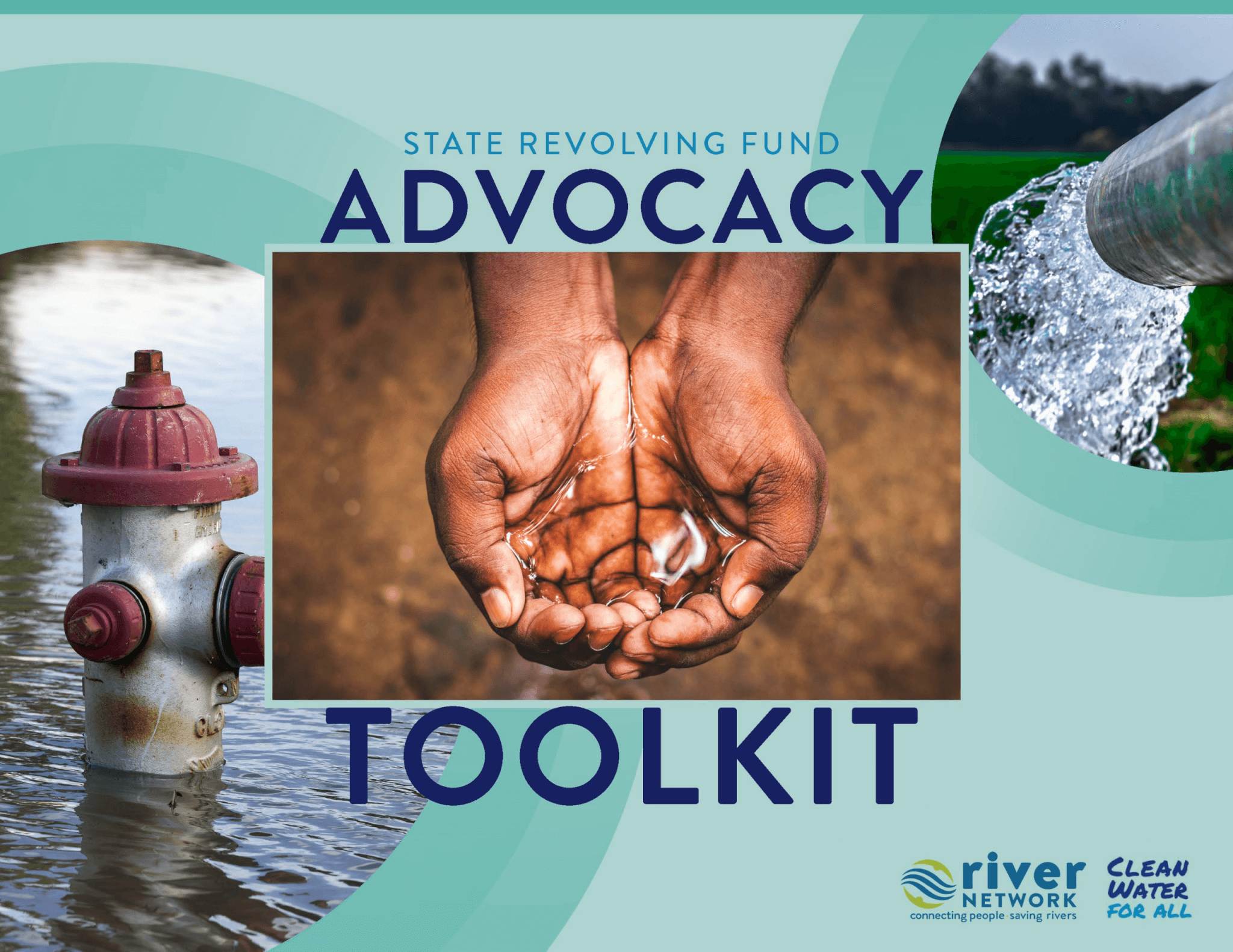State Revolving Fund Advocacy Toolkit
Why State Revolving Funds?
The Clean Water and Drinking Water State Revolving Funds (CWSRF and DWSRF) represent the largest source of federal funding for water infrastructure. The SRFs are intended to support communities across the country by increasing their financial capacity to take on large water infrastructure projects, addressing everything from outdated and leaking pipes to increasing the storage capacity of their water treatment plant to ensure continuous delivery of safe and clean water to their residents. In practice, however, the communities most in need of these investments often face barriers to accessing these dollars. We want to change that.
Who Is This Toolkit For?
This toolkit was developed to support state and local advocates interested in water infrastructure investment who are seeking to better understand the State Revolving Fund (SRF) process. Nonprofit and community-based water advocates have an opportunity to influence how new and recurring federal water infrastructure funds are distributed and to reform how SRF programs operate. This toolkit aims to build the capacity of advocates to influence, improve, and access the process of securing funding for communities who need it most and have historically not been able to access SRF dollars.
The toolkit strives to be accessible to newcomers to this issue, providing background information on how SRFs work and actionable ideas for how to participate in SRF processes and advocacy. Whether you are working with your local utility, interacting with state agency employees, US Environmental Protection Agency (EPA) regional offices, your legislators, or some combination of these primary actors, this toolkit is meant to prepare you to understand:
- How SRF dollars are administered from the federal level down to the state and municipal levels,
- The basic functions of the SRF program and what kinds of projects are eligible under both the Clean Water and Drinking Water SRFs, including changes from the Bipartisan Infrastructure Law,
- The key process points, such as the development and release of the state Intended Use Plan, and ways to engage in targeted advocacy around these points,
- Opportunities to improve the SRF program to better serve disadvantaged communities, especially small, low-wealth and communities of color, who have historically lacked access to SRF funding, and
- Where to find additional support via technical assistance and other resources.
Put the Toolkit to Use!
- Download the full toolkit.
- Click on a topic below if you’d like to jump directly to a specific section of the toolkit.
- The Tools & Strategies section includes email, letter, and op-ed templates, graphics, points of contact for state and federal agency staff, and questions for reflection as you embark on SRF advocacy.
Move through our self-paced, 9-part SRF advocacy training series that puts the Toolkit to use.
Get started here.
How state revolving funds operate + some historical context.
Changes to SRF Administration for 2022-2026 to ramp up water infrastructure investment.
SRF funds can boost climate resiliency in your community.
Infrastructure projects can advance economic opportunities and generate community wealth.
Covers what projects are eligible for CWSRF funding, who can apply, and more.
Covers tribal set-aside program for drinking water and clean water projects.
Some CWSRF & DWSRF funding is directed specifically at emerging contaminants, particularly PFAS.
Rising water costs are linked to water infrastructure maintenance & repair funding needs
Covers what projects are eligible for DWSRF funding, who can apply, and more.
Advocates can influence SRF processes & priorities through IUPs.
$15 billion is dedicated to lead service line inventorying and replacement.
Technical assistance opportunities are increasing to support applicants navigate the SRF process
Template letters and emails, graphics, contact information, and other tips and tools!
View a complete list of references used in the toolkit, key term definitions, and additional info in the appendix.
For a video overview of the Toolkit, watch below!
Acknowledgments
This toolkit was developed with generous support from the Pisces Foundation and in partnership with the Clean Water for All Coalition. The insightful perspectives and expertise of many collaborators informed the content of this toolkit, including an exceptional Advisory Committee of state and local advocates and several technical reviewers with expertise in SRF implementation. River Network and Clean Water for All extend our deep gratitude to the following individuals for providing their time and energy to make this toolkit useful, accurate, and as meaningful as possible:
Advisory Committee
| Grady O’Brien & Grady McCallie, North Carolina Conservation Network | Rebecca Shelton, Appalachian Citizens’ Law Center |
| Cindy Lowry, Alabama Rivers Alliance | Ellen Kohler, The Water Center at the University of Pennsylvania |
| Tracey Reed, Rogue Basin Partnership | Nayyirah Shariff, Flint Rising |
| Richard Diaz, Coalition on Lead Emergency (COLE) | Stuart Coleman, WAI: Wastewater Alternatives & Innovations |
| Sylvia Orduño, People’s Water Board Coalition | Betsy Nicholas, Waterkeepers Chesapeake |
Technical Reviewers
| Lynda Hall, Environmental Protection Network | Anna-Lisa Castle, Alliance for the Great Lakes |
| Tee Thomas, Quantified Ventures | Katy Hansen & Janet Pritchard, Environmental Policy Innovation Center |
| Sonia Kikeri & Tabaris Smith, Emerald Cities Collaborative |






